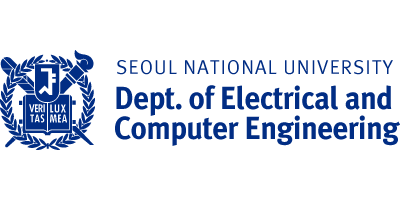Professor Jae-Jun Kim, ‘Expectations for the creation of an ecosystem for an open cooperation between the industry, universities, and research institutes for semiconductor efforts’ (The Electronic Times, 2022.08.15)

Professor Jae-Jun Kim
Traditionally, the semiconductor industry is led by private companies. However, recently, major countries around the world began to recognize semiconductor-related technologies as an important element of national security and are fiercely preparing various support measures at the governmental level. For example, the US recently announced the CHIPS Act, where the government would support US$ 50 billion to support its semiconductor industry, and China is pouring huge funds into related industries.
In the case of Korea, where the semiconductor industry accounts for a very large portion of the national economy, the efforts of the government, businesses, and academia to maintain the leading position even amidst this new international trend are more important than ever. In this respect, the ‘AI Semiconductor Growth Support Measures’ announced by the Ministry of Science and ICT on June 27 is considered a very meaningful starting point.
The most welcoming part of the measures for the writer, who is conducting semiconductor circuit education and research at a university, is the part where leading companies like Samsung Electronics and SK Hynix will be providing advanced fabrication process information to education and research institutions carrying out works in the PIM (Process-In-Memory) field, which is central to processing operations within the semiconductor memory. It is believed that this is an attempt that will bring about a big change in the way of semiconductor circuit research and education through the creation of a new type of industry-academia-research cooperation ecosystem. Until now, due to the nature of memory fabrication, which was protected with high-security measures, companies have provided limited information to external researchers. The announced support measures will lower these barriers, allowing access to deeper levels of knowledge in the memory cell and fabrication technologies and the opportunity to test new technologies. Such is expected to bring about positive innovations in many aspects.
Firstly, as the information related to memory design provided by private companies gets more detailed, based on the information, more diverse ideas will be applied to PIM circuit research. This will in turn lead to AI circuit and system designs with a high degree of integration and completeness, vitalizing research within the academic and research sector.
Secondly, excellent research results developed in this way can be applied to products made in the companies that provided the information that formed the basis for the research through a follow-up joint development. This forms a virtuous cycle that would benefit all the involved parties. Through this cycle, AI semiconductor IP built on memory technology, which Korea excels at, will be added to the IP provided by existing semiconductor foundries, making it possible for domestic foundries to secure an edge over foundry companies of other countries.
Thirdly, it is expected that such a policy would greatly contribute to the training of prepared skilled labor that companies demand. Until now, new researchers, such as graduate students, had limitations in accessing the latest semiconductor technology, so it took a considerable amount of time to adapt to the R&D activities that companies expect. This industry-academia-research cooperation plan will help improve these limitations.
Recently, what has emerged as one of the most important factors for the success of engineering technology is the creation of an open ecosystem in which related bodies actively communicate. Open-source software, which is leading the explosive growth in the software field through the contribution of various members, is a prime example. Unlike software that has no physical form, in the case of semiconductor chips, it is impossible to achieve similar innovations without a provided fabrication environment. Despite such difficulties, internationally, the open-source semiconductor chip research movement has already begun. There was a news article that captivated researchers from related fields. The article was on SkyWater Technology, an American semiconductor foundry company, which with the support of the US government, built a fabrication facility at Purdue University in July last year. The facility is being used as a venue for joint research between industrial, academic, and research groups.
From the standpoint of companies, it is necessary for the government, companies, and academia to think together to create a venue for various innovations while reducing the burden of providing an experimental design research environment that is not immediately helpful to sales. With the measures announced, I boldly dream of a scenario where the industry, universities, and research institutes work together to propose new innovative ideas in the field of semiconductors, and there is a dedicated research venue where such ideas could be applied to stable, albeit old foundry fabrication, and mass production of chips could be tested.
Source: https://ece.snu.ac.kr/community/news?bm=v&bbsidx=52783
Translated by: Do-Hyung Kim, English Editor of the Department of Electrical and Computer Engineering, kimdohyung@snu.ac.kr


